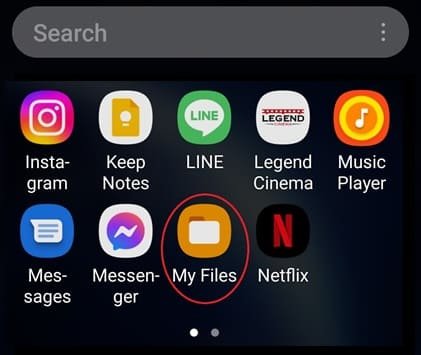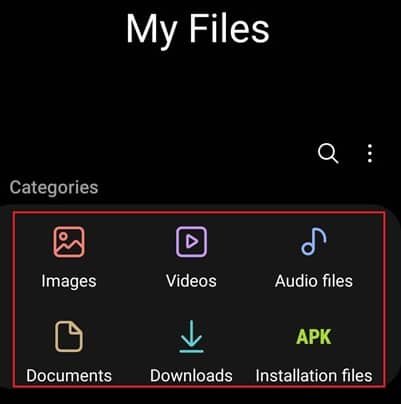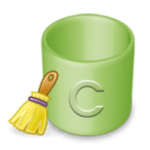Over time, your Android device can accumulate a significant amount of unnecessary files, cluttering up your storage space and potentially slowing down your device’s performance. Deleting these files can free up space, improve responsiveness, and enhance your overall Android experience. Learn how to delete files on Android.
This comprehensive guide will equip you with the knowledge and techniques to effectively delete files on your Android device, ensuring optimal performance and a clutter-free storage experience.
Identifying Unnecessary Files
Before diving into the deletion process, it’s crucial to identify the types of files that can be safely removed from your device. Here are some common categories of unnecessary files:
- Downloaded files: These include files downloaded from the internet, such as documents, images, and music.
- Cache files: These temporary files are created by apps to store frequently accessed data, but they can accumulate over time.
- Log files: These files contain records of app activities, which can be helpful for debugging purposes, but they generally don’t need to be retained for extended periods.
- App data: Uninstalled apps may leave behind residual data that can be deleted.
- Other files: This includes any files that you no longer need or use, such as old photos, videos, or documents.
How to Delete Files on Android Using File Manager
Android devices come with built-in file manager apps that allow you to manage your files effectively. Here’s a step-by-step guide on how to delete files using the File Manager:
- Open the File Manager app: Locate and launch the File Manager app on your Android device.
- Navigate to the desired location: Use the File Manager’s navigation options to browse to the folder containing the files you want to delete.
- Select files for deletion: Long-press on the files you want to remove. You can also select multiple files by tapping them once.
- Delete selected files: Tap the “Delete” or “Trash” icon to remove the selected files.
- Confirm deletion: In some cases, a confirmation prompt may appear. Tap “Delete” or “Confirm” to proceed.
The process is very simple, BUT, be careful to not delete files that you want to keep. (How to recover deleted files?)
- Open the Apps page on your phone or tablet

- Touch on the My Files icon to open the app

- On the bottom of the My Files screen, you should see categories of types of files.
- Touch on a category, such as Images
- View the icons of the various images
- Long Touch (Touch and hold) on the image of the file you want to delete. After you select the first file, you can touch on additional files to add to the list of files to delete.
- When you have selected the files to delete, Touch on the delete icon on the bottom of the screen.
- This same procedure can be followed for each of the different categories.
How to Delete Files on Android Using Third-party Apps
In addition to the built-in File Manager, there are numerous third-party file management apps available on the Google Play Store. These apps often provide additional features and functionalities, such as file scanning, categorization, and secure deletion.
Third-Party File Manager Comparison
| Feature | Astro File Manager | Solid Explorer | ES File Explorer | FX File Explorer | Amaze File Manager |
|---|---|---|---|---|---|
| Storage Management | ✓ | ✓ | ✓ | ✓ | ✓ |
| File Transfer | ✓ | ✓ | ✓ | ✓ | ✓ |
| Cloud Storage Integration | ✓ | ✓ | ✓ | ✓ | ✓ |
| Root Access | ✕ | ✓ | ✓ | ✓ | ✕ |
| Multi-pane View | ✓ | ✓ | ✓ | ✕ | ✕ |
| Built-in Text Editor | ✓ | ✓ | ✓ | ✓ | ✓ |
| Built-in Media Player | ✓ | ✓ | ✓ | ✕ | ✕ |
| Theme Support | ✓ | ✓ | ✓ | ✓ | ✕ |
| Password Protection | ✓ | ✓ | ✓ | ✕ | ✕ |
| Ad-supported | Free | Paid | Free with ads | Free with in-app purchases | Free with ads |
| Price | Free | $1.99 | Free | Free with in-app purchases | Free with ads |
| Rating | 4.7 | 4.7 | 4.3 | 4.7 | 4.6 |
| Downloads | 100,000,000+ | 10,000,000+ | 100,000,000+ | 10,000,000+ | 100,000,000+ |
As you can see, Astro File Manager is a well-rounded file manager with a variety of features that make it a good choice for many users. It is free to use and does not have any ads, which is a major advantage over some of the other file managers on this list.
Here is a more detailed comparison of Astro File Manager to the other file managers on this list:
Astro File Manager vs. Solid Explorer
Solid Explorer is a more powerful file manager than Astro File Manager, but it is also more expensive. It is a good choice for users who need a lot of control over their files, but it may not be the best choice for users who are looking for a simple and easy-to-use file manager.
Astro File Manager vs. ES File Explorer
ES File Explorer is a popular file manager with a lot of features, but it is also ad-supported. Astro File Manager is a good alternative to ES File Explorer if you are looking for a free file manager that does not have any ads.
Astro File Manager vs. FX File Explorer
FX File Explorer is a newer file manager that has quickly gained a following for its clean and minimalist design. Astro File Manager is a good alternative to FX File Explorer if you are looking for a file manager with more features.
Astro File Manager vs. Amaze File Manager
Amaze File Manager is a lightweight and easy-to-use file manager that is a good choice for users who are looking for a basic file manager. Astro File Manager is a good alternative to Amaze File Manager if you are looking for a file manager with more features.
Ultimately, the best file manager for you will depend on your individual needs and preferences. I recommend trying out a few different file managers to see which one you like best.
Deleting System Files
Deleting system files is generally not recommended as it can lead to system instability or even device malfunction. If you’re unsure whether a file is part of the system, it’s best to avoid deleting it.
Conclusion
Regularly deleting unnecessary files on your Android device can significantly enhance its performance, storage capacity, and overall user experience. By following the guidelines provided in this guide, you can effectively manage your files and maintain a healthy and responsive Android device.
Common problems and solutions to delete files from Android:
Problem: Unable to delete files due to “Read-only” error
Solution: Check if the files are stored in the external storage (SD card) and ensure the SD card is not locked. If the files are stored in the device’s internal storage, try using a file manager app with root access to delete them.
Problem: Unable to delete files due to “Permission denied” error
Solution: Check if the files are associated with an app and try deleting them through the app’s settings or uninstalling the app. If the files are not associated with any app, try using a file manager app with root access to delete them.
Problem: Unable to delete files due to “File is in use” error
Solution: Check if the files are currently being used by an app and close the app before trying to delete them. If the files are still in use, try restarting the device and then delete them.
Problem: Unable to delete files due to “File is corrupted” error
Solution: Try scanning the device’s storage for corrupted files using a data recovery app. If the files are indeed corrupted, you may need to format the storage device to delete them.
Problem: Unable to delete files due to “File is hidden” error
Solution: Enable the option to show hidden files in your file manager app. Once hidden files are visible, you should be able to delete them.
Problem: Unable to delete files due to “File is system file” error
Solution: Do not delete system files unless instructed to do so by a reliable source. Deleting system files can lead to device instability or malfunction.
Additional Tips:
- Use a reliable file manager app to delete files.
- Delete files in small batches to avoid overloading the device.
- Regularly back up your important files before deleting any files.
Frequently asked questions (FAQ) and answers to delete files from Android:
Q: What is the best way to delete files from Android?
A: The best way to delete files from Android is to use a file manager app. There are many file manager apps available, both free and paid. Some popular file manager apps include Astro File Manager, Solid Explorer, ES File Explorer, FX File Explorer, and Amaze File Manager.
Q: How can I delete files from my internal storage?
A: To delete files from your internal storage, you can use a file manager app. Open the file manager app and navigate to the folder containing the files you want to delete. Select the files you want to delete and then tap the “Delete” button.
Q: How can I delete files from my SD card?
A: To delete files from your SD card, you can use a file manager app. Open the file manager app and navigate to the SD card. Then, follow the same steps as above to delete the files you want to delete.
Q: How can I delete files that are being used by an app?
A: To delete files that are being used by an app, you must first close the app. Once the app is closed, you should be able to delete the files. If you are still unable to delete the files, you can try using a file manager app with root access.
Q: How can I delete hidden files?
A: To delete hidden files, you must first enable the option to show hidden files in your file manager app. Once hidden files are visible, you should be able to delete them.
Q: How can I delete system files?
A: You should not delete system files unless instructed to do so by a reliable source. Deleting system files can lead to device instability or malfunction.
Q: What is the difference between deleting and moving files?
A: When you delete a file, you are permanently removing it from your device. When you move a file, you are simply changing its location.
Q: Where do deleted files go?
A: Deleted files are not actually deleted from your device until they are overwritten by new data. This means that it may be possible to recover deleted files using data recovery software.
Q: How can I prevent my files from being deleted accidentally?
A: There are a few things you can do to prevent your files from being deleted accidentally:
- Use a file manager app with password protection.
- Back up your files regularly.
- Enable the option to show hidden files in your file manager app so that you can see all of your files.
- Be careful when deleting files and make sure you are deleting the files you want to delete.
Additional helpful information:
You may also want to periodically delete the App data and Cache for various apps to keep your Android phone or tablet clean. (How to delete app data and cache?)
If the storage space is getting full, this post will help you free up some space. How to free up space on Android?




